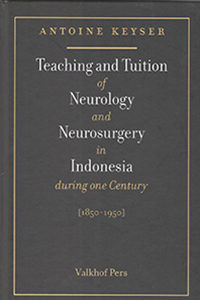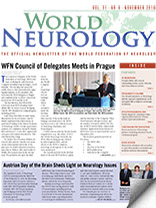 By Wolfgang Grisold, MD
By Wolfgang Grisold, MD
The book Teaching and Tuition of Neurology and Neurosurgery in Indonesia During One Century (1850-1950) by Antoine Keyser provides a history of neurology in Indonesia, covering development of this field in different epochs of science and the changing political situation. It also memorably describes the research, theories, and final detection of beriberi in this part of the world.
Indonesia is a large country, and looking at its population of 240 million, distributed on 3,000 islands, it is surprising that we know so little about the country and its neurology. The territory of what now is Indonesia is briefly followed through history, which is important in order to understand the influence of different medical schools, mostly from the Dutch academic background, on the development of the health system, including neurology. The book describes the emerging specialty of neurology in close context to psychiatry and the later emerging field of neurosurgery.
The reader will find many familiar names from European neurology involved in research and development. The book also includes a short sketch on specialization in psychiatry in Indonesia. In particular, the studies of the Swiss psychiatrist Emil Kraeplin (1856-1926) visiting and studying the cultural factors influencing mental diseases is a good example.
The author chronologically looked at publications and topics of interest to neurologists. The most impressive story is that of beriberi, and a separate chapter not only teaches the importance of this disease for the region, but the tortuous path the final discovery of the cause and offering of effective treatment of this condition. This story, like the similar story of scurvy, teaches how inflexible dogma, conventions, and large organizations (where individuals including prisoners, soldiers, and patients were kept under uniform conditions) can endanger the health of persons. Also, the author’s description of vitamin B1 deficiency and its effect on the health of people is a worthwhile lecture for teaching purposes.
This book mirrors the field of neurology in the past 100 years worldwide, using the example of Indonesia. The development of local conditions are described, based on historic facts as well as publications.
It is a good example of how a book comprising narrative and facts can provide valuable background on neurology in an individual area. The World Federation of Neurology could be well advised to encourage its members to produce similar outlines of the history and development of neurology in its regions.
